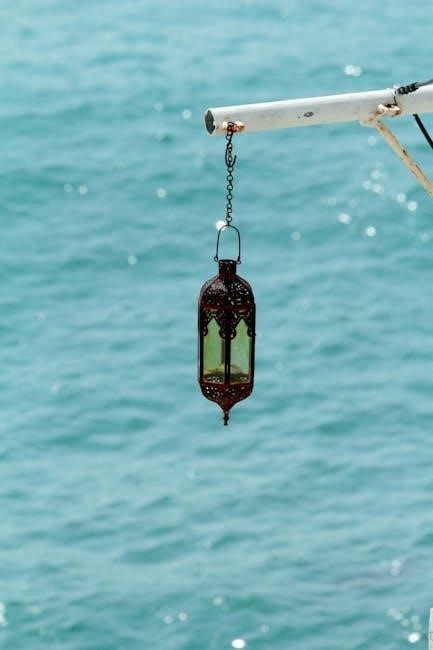to compare sizes and styles effectively always.

Treble Hook Size Chart Overview
A treble hook size chart is a valuable resource for anglers, providing a comprehensive overview of the different sizes and types of treble hooks available. The chart typically includes a range of sizes, from small to large, and may also include information on the recommended uses for each size. Using a treble hook size chart can help anglers to make informed decisions about which hooks to use for different types of fishing and species of fish. The chart may be presented in a variety of formats, including tables and diagrams, to make it easy to compare and contrast the different sizes and types of hooks. By referring to a treble hook size chart, anglers can ensure that they are using the most effective and appropriate hooks for their fishing needs. This can help to improve their chances of catching fish and to make their fishing experiences more successful and enjoyable.
Importance of Choosing the Right Treble Hook Size
Choosing the right treble hook size is crucial for successful fishing, as it can affect the likelihood of catching fish and the overall fishing experience. A hook that is too small may not be able to hold a large fish, while a hook that is too large may be too visible and scare off smaller fish. Using the correct treble hook size can also help to prevent fish from being injured or killed, as it can reduce the risk of the hook causing internal damage. Additionally, using the right hook size can help to improve the chances of landing a fish, as it can provide a secure hold and prevent the fish from coming off the hook. By selecting the appropriate treble hook size, anglers can increase their chances of a successful catch and enjoy a more rewarding fishing experience. This is especially important for novice anglers who are still learning the basics of fishing.

Treble Hook Size Chart by Species
Using
- unordered listsTreble Hook Sizes for Trout, Catfish, and Bass
When it comes to choosing the right treble hook size for trout, catfish, and bass, there are several factors to consider, including the type of lure being used and the size of the target fish. A
- list of recommended hook sizes
can be helpful in making this decision. For trout, a smaller hook size such as 6 or 8 is often preferred, while for catfish, a larger hook size such as 2 or 4 may be more effective. Bass, on the other hand, can be caught using a variety of hook sizes, depending on the specific technique being used. By considering the specific needs of each species, anglers can increase their chances of success and make the most of their time on the water. Using the right hook size can make all the difference in catching trout, catfish, and bass, and a little research can go a long way in determining the best approach.
Recommended Treble Hook Sizes for Different Fish Types
Anglers can benefit from a comprehensive guide to recommended treble hook sizes for various fish types, including a
to compare sizes. Different fish species require specific hook sizes to ensure a successful catch. For example, panfish and small trout require smaller hook sizes, such as 10 or 12, while larger species like pike and muskie require larger hook sizes, such as 1 or 2. A
- list of recommended hook sizes
for each fish type can help anglers make informed decisions and increase their chances of catching their target species. By considering the specific hook size requirements for each fish type, anglers can optimize their tackle and improve their overall fishing experience. Using the right treble hook size for the target fish species is crucial for a successful fishing trip, and a reliable guide can provide valuable insights and recommendations. Various fish types have unique requirements for treble hook sizes.

Understanding Treble Hook Sizes
Using standard measurement systems to understand treble hook sizes effectively always matters.
The Aught System for Treble Hook Sizes
The aught system is a method of measuring treble hook sizes, with larger numbers indicating smaller hooks, using a combination of numbers and letters to denote size. This system can be confusing for new anglers, but understanding it is crucial for choosing the right hook size. The aught system includes sizes from 1/0 to 14, with 1/0 being the largest and 14 being the smallest. A comprehensive chart of treble hook sizes can help anglers navigate this system and choose the right hook for their needs. By using the aught system, anglers can ensure they are using the correct hook size for their target species, increasing their chances of a successful catch. The aught system is widely used in the fishing industry and is an essential tool for any angler looking to improve their skills. With practice and experience, anglers can become proficient in using the aught system to choose the perfect treble hook size.
Life Size Chart for Treble Hooks
A life size chart for treble hooks is a visual tool that displays the actual size of each hook, allowing anglers to compare and contrast different sizes. This chart can be especially helpful for new anglers who are unfamiliar with the different sizes and types of treble hooks. By using a life size chart, anglers can get a better understanding of the physical dimensions of each hook, including the length, width, and gap. The chart can also include information on the recommended uses for each hook size, such as the type of fish or lure that it is best suited for. A life size chart can be found online or in fishing stores, and is a valuable resource for any angler looking to improve their knowledge of treble hooks. The chart provides a clear and concise way to compare hook sizes, making it easier to choose the right hook for a particular fishing trip.

Choosing the Right Treble Hook
Using
- unordered lists
to select suitable treble hooks based on fishing conditions always matters.
Considerations for Weedy and Snaggy Areas
When fishing in weedy and snaggy areas, it is crucial to consider the type of treble hook to use. Using a short-shanked treble hook can help prevent the hook from getting caught in weeds or snags. This type of hook is designed to be more compact, making it less likely to get tangled in vegetation. Additionally, a short-shanked treble hook can also help to reduce the risk of the hook being pulled out of the fish’s mouth. By using the right type of treble hook, anglers can increase their chances of landing a fish in weedy and snaggy areas. It is also important to consider the size of the treble hook, as a larger hook may be more prone to getting caught in weeds. A smaller hook, on the other hand, may be more suitable for fishing in tight spaces. Using
- unordered lists
to outline the benefits of short-shanked treble hooks can be helpful.
Selection Based on Fish Jaw and Teeth Strength
The selection of a treble hook size is also dependent on the jaw and teeth strength of the target fish species. Fish with strong jaws and teeth, such as pike and muskie, require heavier treble hooks to prevent the hook from being bent or broken. On the other hand, fish with weaker jaws and teeth, such as trout and panfish, can be caught using lighter treble hooks. Using a
to compare the jaw and teeth strength of different fish species can help anglers make an informed decision. It is essential to consider the fish’s jaw and teeth strength when selecting a treble hook size to ensure a successful catch. By choosing the right treble hook size, anglers can increase their chances of landing their target species. A
- definition list
of fish species and their corresponding treble hook sizes can be a useful reference for anglers. This information can help anglers make the right choice.
